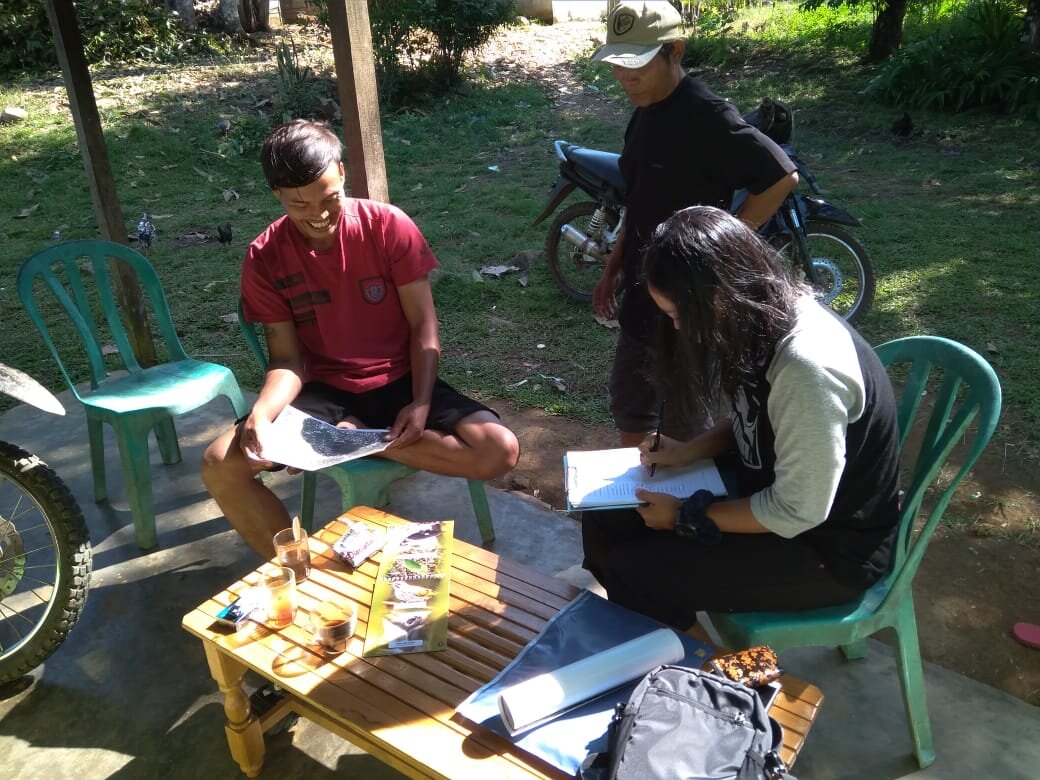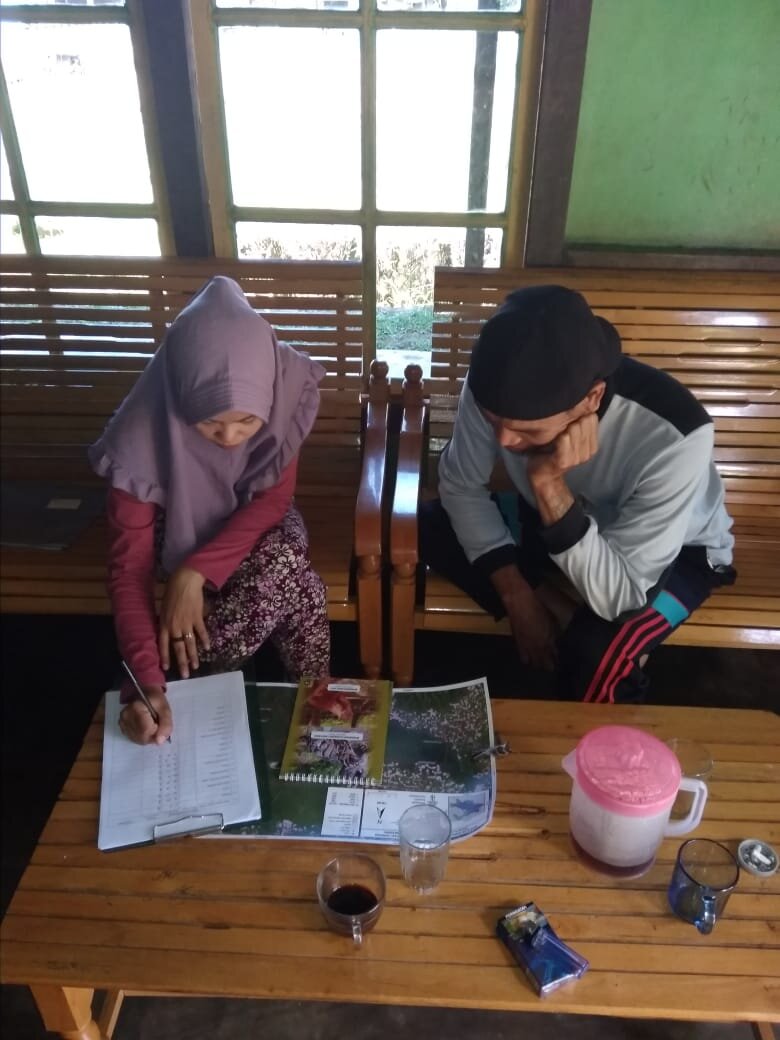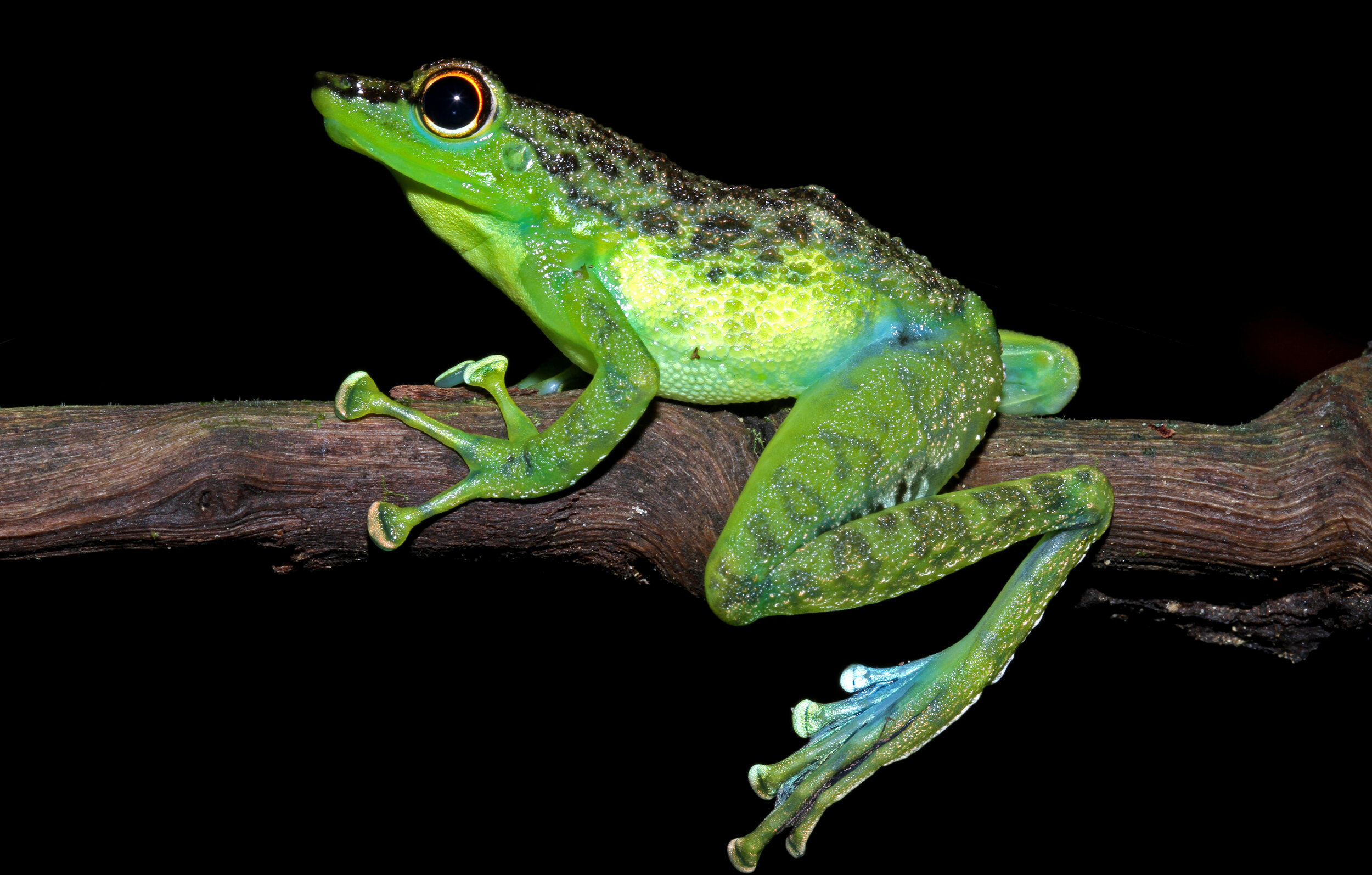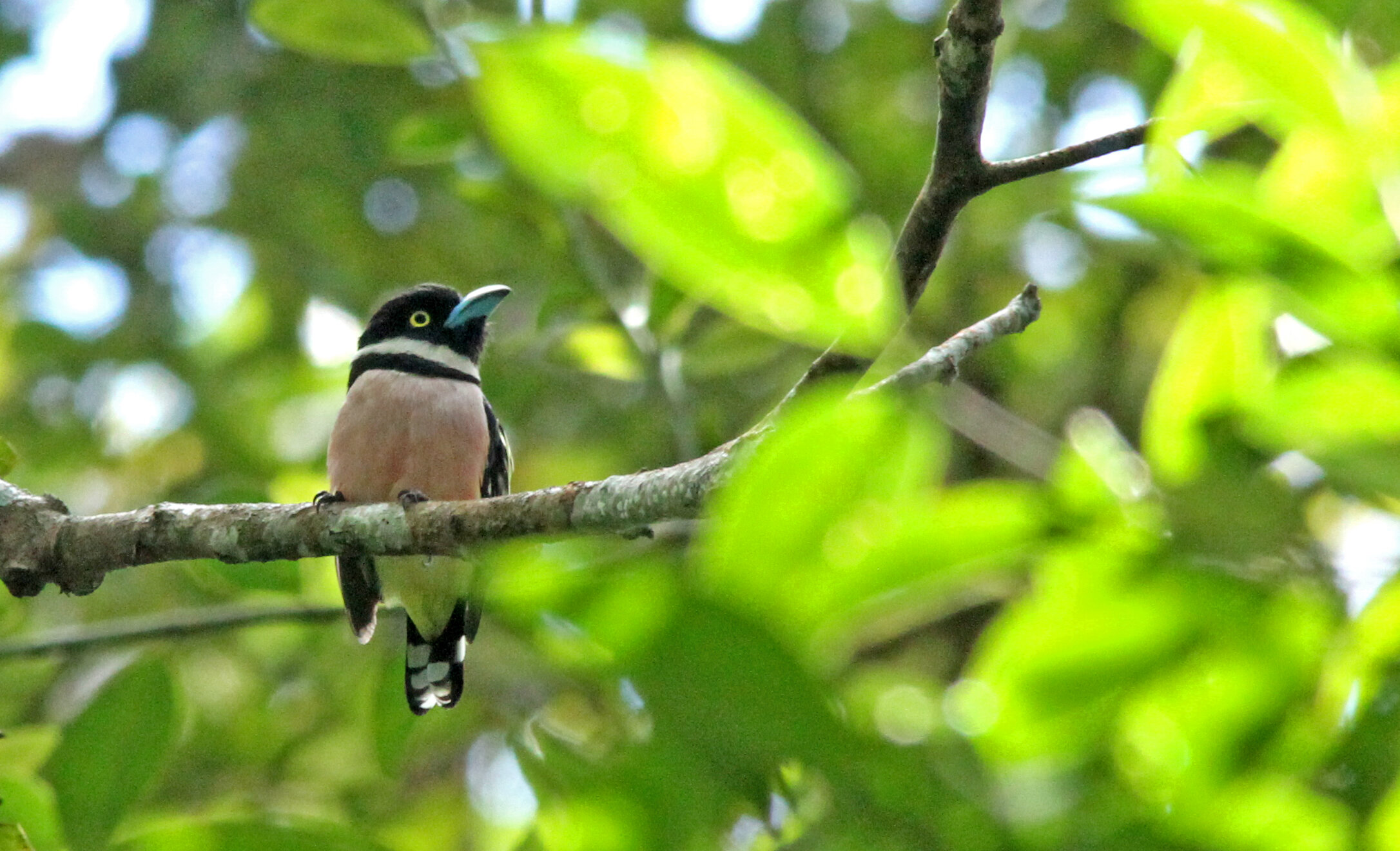Leveraging local knowledge to estimate wildlife densities using the PLEO method
See our research paper in Wildlife Biology, Issue 1, Volume 2021 * No 1 | 2021
As a conservation organization protecting at-risk ecosystems, it is incredibly important for us to understand trends in wildlife populations in our project sites in a quick, reliable, and cost-effective manner. However, conventional methods to estimate wildlife population parameters, especially in tropical forests, require an intense amount of effort, time, expertise, and funding. Often, conventional techniques such as using camera traps, transects, and audio counts provide inconsequential data that limits the ability to estimate populations for various reclusive wildlife species such as hornbills and wild cats. As a result, it is not always possible for us to understand the direct impact our programs have on the wildlife inhabiting the forests surrounding our partner villages.
In 2019, we used the ‘Pooled Local Expert Opinion’ (PLEO) method developed by Hoeven et al. (2004) to help estimate wildlife populations near our partner villages in the Gunung Nyiut Nature Reserve located in West Kalimantan, Indonesia. This novel wildlife density estimation method relies on a social surveying approach to collect estimates of wildlife abundance from local community members who are knowledgeable about surrounding wildlife (e,g hunters). We interviewed 58 such community members across 3 villages within our project site. Initial study participants were identified with the support of village leaders, with subsequent participants identified using the ‘chain referral’ method.
Upon meeting a participant, a member of our research team showed the participant a map and asked them to identify the area on the map that they were most familiar with. Once the participant delineated the area they were familiar with, the participant was shown pictures of different animal species from a prepared booklet and asked if they had ever seen this animal during their trips into the forest. After the participant was able to correctly identify the animal species, they were then asked the question, ‘How many of this animal do you think inhabits this area?’. Participants provided either a range (e.g. 10 to 20) or a specific number (e.g. 20) for each species that they felt inhabited the area they were familiar with. Once all 58 surveys were completed, we divided each participant’s estimate for each species by the corresponding surface area of that given sample unit. This resulted in 58 density estimates for each species. This information was then pooled into one density estimate for each species, representing the entire study area. This method followed the steps outlined in Hoeven et al. (2004). This allowed us to estimate densities of 36 wildlife species including 24 mammals and 12 bird species.
In order to understand the effectiveness of the PLEO method to accurately estimate wildlife densities in our project location, we assessed the reliability and the effort required to carry out a PLEO survey compared to conventional density estimation methods (e.g. point count transects and camera traps survey). Results revealed that there are many advantages of using the PLEO method as compared to conventional field methods. Particularly, it was possible to estimate densities for more species compared to conventional methods. Often, this is because conventional methods require significant detections of animals to enable comprehensive analysis. Our point count transect surveys, using the conventional distance sampling (CDS) method, carried out in the same locations as the PLEO surveys gave us hundreds of detections of various wildlife, but only provided us enough data to estimate density for 6 bird species. Since these transects need to be conducted multiple times throughout the year to account for seasonality and require walking long distances through dense forest understory to increase detection rates, this method is both time-consuming and expensive. Although transects should be selected at random, in practical terms, it is not possible to do in a tropical forest setting due to insurmountable terrain (e.g. rock walls, large rivers, cliffs). Alternatively, a review of studies using camera traps and transect surveys to derive density estimates of selected species from other parts on the island of Borneo also highlighted a similar story. In most cases, authors cited that they did not get enough detections to enable a full analysis of various cryptic wildlife species due to various factors. In addition to these practical limitations, conventional methods also require researchers to use various models and follow key assumptions in their study design to reduce uncertainties and allow for accurate extrapolation of results from the sample area to the study area. If researchers are unable to follow these standard protocols and model assumptions, they risk making misleading measurements, leading to erroneous inferences about the wildlife populations for their study area. Moreover, comparisons of the survey effort between the PLEO method and conventional methods show that the PLEO method requires significantly less time and money to produce similar results. Particularly, we found that the PLEO survey required fewer trained human resources, significantly less time to complete data collection and analysis, and was 10 times cheaper to carry out compared to point count transects.
Through our study, we suggest that, while the PLEO method has clear advantages in rapidly estimating wildlife densities in a reliable and cost-effective manner, it should not replace more conventional methods of estimating wildlife populations. Rather, the PLEO method can become a complementary tool for estimating wildlife densities and would work best in combination with other more intensive methods and allow researchers to generate a holistic picture of the trends in wildlife populations in their project areas.
During the data collection phase, participants shared nuanced information about population trends, the effect of seasonality on specific wildlife species, and population variations based on habitat type among other things. Since we use a community-led conservation model for our field programs, using the PLEO method enables us to engage local community members to generate genuine interest in conservation and bolster local support for conservation action that helps create pathways to engage local stakeholders in co-management of their surrounding natural resources.






